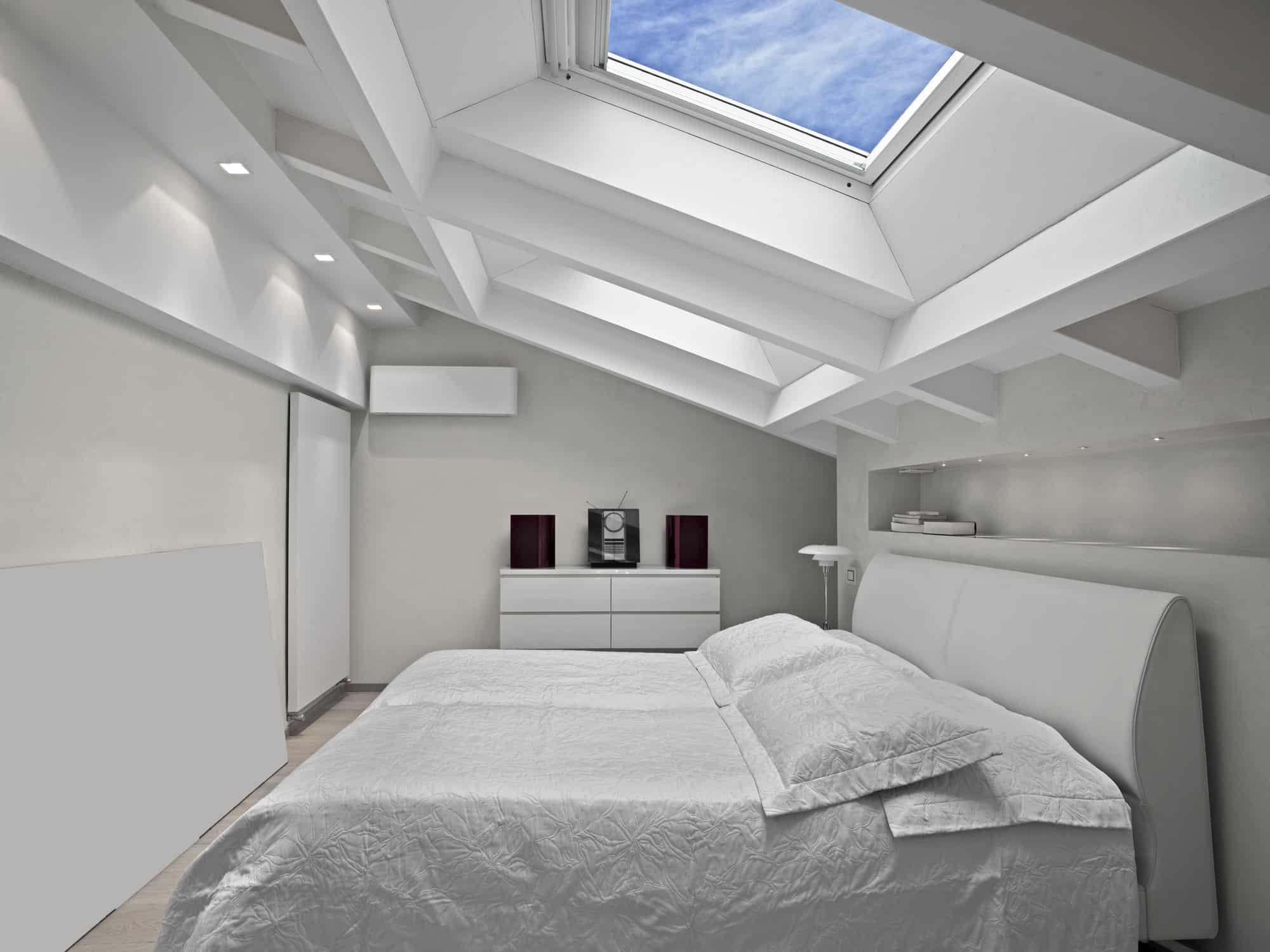There is something inherently comforting and rejuvenating about the sun shining down on us, filling our homes with its warm, natural light. But what do you do when some parts of your house, like the hallway, miss out on this celestial bounty? You might consider installing a skylight, a design element that will transform your dark space into a sun-kissed corridor of serenity. By channeling the light through a tunnel from your roof, a skylight not only brightens the room but also adds a touch of elegance to your interior décor. If you’re interested in how to install a skylight in a dark hallway for natural light, read on.
1. Choosing the Right Skylight Design
Before you begin the installation process, it’s important to determine the type of skylight that will best serve your needs. Essentially, a skylight is a window installed on the roof, made predominantly of glass or plastic. The Velux brand is a popular choice among homeowners for their variety of designs and excellent quality.
This might interest you : What’s the Best Way to Soundproof a Nursery for a Peaceful Baby’s Sleep?
There are three main types of skylights: Fixed, Ventilating, and Tubular. Fixed skylights are sealed to the roof and do not provide any ventilation. These are ideal for hallways where light, rather than fresh air, is the primary requirement. Ventilating skylights can be opened and closed to control the amount of light and air that enters the room. Tubular skylights, or sun tunnels, are compact and versatile, making them ideal for small spaces like hallways. They channel light through a highly reflective tunnel, bringing natural light into the space below.
2. Planning and Preparing for Installation
Once you’ve chosen the type of skylight that best suits your needs, the next step is the planning and preparation phase. This includes identifying the ideal location for the skylight, considering the sun’s path to maximize light capturing.
Also to see : How to Create a Mediterranean-Inspired Outdoor Lounge with Water-Resistant Fabrics?
You should plan to install your skylight on a north-facing roof for consistent, softer light, or a south-facing roof for brighter, warmer light. The size of your skylight will also impact the amount of light your hallway receives: larger skylights provide more light but also more heat.
You’ll also need to consider how to integrate the skylight into your existing roof structure. This will involve examining your roof’s trusses and rafters to ensure they can accommodate the skylight. Preparation also includes gathering all the necessary tools and materials for the installation process.
3. Installing the Skylight
The actual installation of the skylight involves cutting a hole in your roof, installing the skylight, and then sealing it to ensure it’s waterproof. You’ll start by marking out the location of the skylight on your roof, using the manufacturer’s dimensions as a guide.
Carefully cut along your marked lines, ensuring you only cut through the roof and not any structural beams. Once you have your hole, you will position the skylight in place. For a tubular skylight, you will need to install the reflective tunnel that channels the light from the roof to the hallway.
Ensure the skylight is fully sealed and waterproof to prevent any potential leaks. This is typically done using a special type of flashing designed to work with your specific type of roof material.
4. Finishing Touches and Maintenance
Once your skylight is installed, it’s time to focus on the finishing touches and maintenance aspects. If your hallway ceiling is finished, you’ll need to create a light shaft to direct the sunlight from the skylight into the hallway. This is typically done with drywall and then painted to match the existing ceiling and walls.
Maintenance is essential to ensure the longevity of your skylight. Regularly check the glass for any cracks or leaks, especially after a heavy storm. Cleaning the glass periodically will maintain the clarity of the skylight, ensuring maximum light transmittance.
5. Enjoy the Transformation
Installation of a skylight in your dark hallway is not just a functional improvement, but an aesthetic enhancement too. The dramatic interplay of shadows and light will transform the look and feel of your hallway, creating an image of brightness, spaciousness, and warmth.
Remember to consider the way the light will change throughout the day and through the seasons. The light will alter the appearance of your hallway at various times, creating an ever-changing, dynamic space.
While the process of installing a skylight involves a fair amount of diligence and hard work, the outcome is well worth the effort. Enjoy the transformation as your once dark hallway now basks in the glory of natural sunlight, thanks to the skylight that you’ve successfully installed.
6. Additional Skylight Options and Features
Investing in a skylight opens up a plethora of options that can further enhance your home’s comfort and appeal. There are additional features you might consider to make the most of your skylight installation.
For instance, you could opt for a Velux sun tunnel skylight that comes with an integrated night light, allowing it to function as a source of light even after sunset. This feature could be particularly handy if your hallway doesn’t have other light sources.
Another feature to consider is the possibility of a solar-powered skylight. Besides being environmentally friendly, these solar-powered skylights might qualify you for a tax credit, providing an economic incentive on top of the appeal of natural light.
You might also want to explore skylights with built-in blinds. These allow you to control the amount of light entering the hallway, which could be beneficial in averting excessive brightness during certain times of the day.
Lastly, if you’re worried about potential damage, consider a skylight with an acrylic dome. These are more resilient to impacts, a characteristic that could be vital in case of hail or other severe weather conditions.
7. Extending Skylight Benefits to Other Rooms
The value of a skylight isn’t limited to your hallway. Other rooms in your house could equally benefit from the influx of natural daylight that a skylight provides.
For instance, a tubular skylight in your living room could create a visually appealing light space that complements the room’s décor. Similarly, having sun tunnels installed in your dining room would introduce a refreshing wave of natural light that enhances the dining experience.
Remember, the beauty of natural light is that it alters with the progression of the day, creating a dynamic ambiance that breathes life into your home. A skylight in these rooms will not only brighten the area but also add a sense of spaciousness and warmth.
On a practical note, skylights in rooms like the kitchen or bathroom serve a functional purpose too. They reduce the need for artificial lighting, which in turn saves energy and may lower your utility bills.
Conclusion: The Beauty and Benefits of Skylights
Skylights are a fantastic way to bring natural light into your home’s interior spaces. The installation process, while involving some diligence and hard work, will reward you with a corridor of serenity bathed in sunshine. Not only does this enhance the aesthetic appeal, but it also creates a healthier living environment by increasing natural light.
Moreover, the flexibility of options – from choosing a fixed, ventilating, or tubular skylight to exploring additional features like integrated night light, built-in blinds, or an acrylic dome – allows you to tailor the installation to your specific needs and preferences.
Remember, the impact of your skylight extends beyond your hallway. Other rooms, like your dining room or living room, can also benefit from the beauty of sun tunnels and tubular skylights.
As you embark on this skylight installation journey, take it as an opportunity to transform your home into a bright, spacious, and warm haven that resonates with the glory of natural sunlight. Enjoy the transformation that awaits you!






